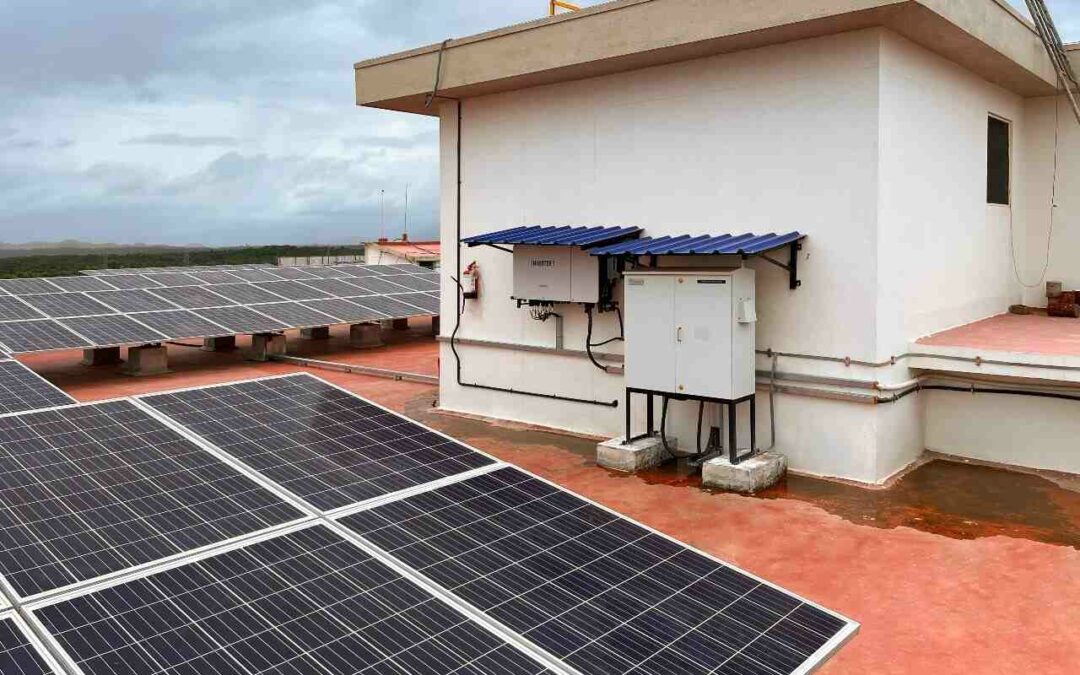Introduction
Solar energy offers a self-sustaining source of power, which is in the form of DC power. The question arises, how can you transform this energy into AC power to meet the industry’s energy requirements.
By using solar inverters!
Inverters are of many types and all of them share the fundamental objective of transforming the electricity generated by the solar panel system into a usable form, namely, alternating current (AC). They play a crucial role in converting the raw DC power into AC power, enabling you to power your appliances.
These essential components of rooftop solar systems are available in three primary types. This blog aims to clarify the distinctions between these three types of solar inverters and assist you in determining which one best fits your needs.
Types of Solar Inverters
There are three types of inverters which are used in solar power systems. These are available in different input capacity options, including 12-volt DC, 48-volt DC, and even 96-volt DC.
Let us take a look at these types in a general sense.
On-grid inverters are those directly connected to the grid whose primary function is to convert DC power into AC power. Whereas the off-grid operates independently without relying on the grid. It extracts power from the battery and converts it from DC and supplies it as AC output.
The last type is Hybrid inverters which is compatible with off-grid and on-grid systems.
How Do On-Grid, Off-Grid, and Hybrid Solar Inverters Differ from Each Other?
Now it is important to check the requirement of each solar inverter. Let us now explore the three types of solar inverters available in the market.
On-Grid Inverter
The on-grid solar inverter comes equipped with an important safety feature known as Anti-Islanding Protection. The solar inverter that is connected to the power grid has a safety feature called Anti Islanding Protection. This feature enables it to disconnect the power supply from the solar panel system in the event of an electrical arc. Additionally, this inverter channels excess electricity into the utility grid through a bidirectional meter.
Off-Grid Inverter
Off-grid inverters can’t synchronize with the grid because they are built to operate independently. Off-grid inverters are required to rapidly convert DC electricity to AC to power the appliances.
It continues to be linked to a battery bank that stores extra solar energy produced by solar panels. The off-grid solar inverter uses stored energy from the battery bank during power interruptions, such as when solar intensity isn’t available at night. It then transforms the DC electricity from the battery into useful AC current and distributes it to meet the energy demands.
Hybrid Inverter
This version of inverted can be used to store the energy and also act as a grid as when supply is needed for the industry. These can intelligently manage power, reducing the conversion losses while DC is converted into AC.
Microinverters
Another Classification is Microinverters, inverters that change direct current (DC) into alternating current (AC), The main thing that sets microinverters apart, from inverters is that they work at the level of panels instead of the whole solar panel system. Unlike string inverters, micro-inverters control the output of a single panel and are much safer.
Here are a few things to look for when purchasing solar inverters.
Solar Inverter Warranties
Most of the inverters typically offer warranties of 5 or 10 years, which can be further extended for up to 25 years. Additionally, when making an inverter purchase, it’s essential to have a clear understanding of what the warranty entails and what it does not.
You should be aware of whether the warranty covers internal malfunctions exclusively or also extends to external damage. Also, check for service centers and shipping costs associated with it.
Solar Inverter Operating Temperatures
The operating temperature range deemed ideal for a solar inverter’s secure operation is always higher than the surrounding air. When the ambient temperature climbs above 32°C, a temperature differential of roughly 10–14°C is observed during the day. This suggests that an inverter operating at a temperature of roughly 47–51°C would correspond to an ambient temperature of 37°C. Because inverters naturally produce heat and operating conditions aren’t always ideal, a solar inverter periodically needs to work under more challenging conditions.
So it’s crucial to pick a solar inverter with a higher operating temperature. A higher working temperature capability of the inverter indicates that it can withstand higher heat levels, which enhances the inverter’s overall performance and dependability.
Solar Inverter Efficiency
Peak efficiency and weighted efficiency are generally used to describe the efficiency of solar inverters. Peak efficiency is the inverter’s efficiency when it performs at its best, whereas weighted efficiency takes factors such as the DC input levels into consideration. As it takes into account elements like temperature, sunlight, and other environmental effects that may affect the inverter’s performance throughout the day, weighted efficiency offers a more accurate evaluation.
Conclusion
Although it is obvious that solar energy is sustainable, solar inverters are necessary to meet energy demands. These devices convert solar panel’s DC energy into AC power. There are three types of inverters; Off-Grid, On-Grid, and Hybrid classified based on their functions.
Examining warranty coverage, operating temperature, and efficiency is necessary when selecting a solar inverter. The important factors to consider before purchasing the inverter are checking for warranties, which range from 5 to 25 years, and understanding their scope, which includes expenditures associated with interior and external damage as well as repairs. Operating temperature tolerance affects performance in difficult circumstances. Efficiency measurements that account for environmental factors, such as peak and weighted efficiency, evaluate an inverter’s performance.
Choosing a solar inverter1 is a crucial decision when setting up a solar power system. Ultimately the choice of a solar inverter should be based on your specific needs and it is advisable to consult with Solar Experts who can assess your site potential and recommend the best for your Solar power system.
Check our solar projects now

